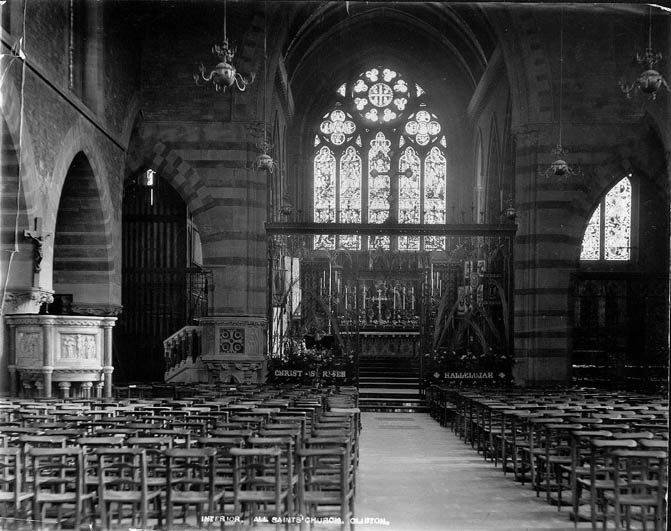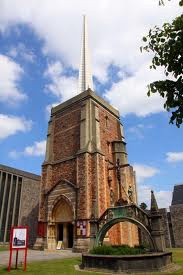Church Micro #885 Clifton - All Saints Traditional Geocache
Church Micro #885 Clifton - All Saints
-
Difficulty:
-

-
Terrain:
-

Size:  (micro)
(micro)
Please note Use of geocaching.com services is subject to the terms and conditions
in our disclaimer.
All Saints Church was founded in 1862 but suffered during WWII when an incendiary bomb severely damaged the building.
Read on for more details of this fascinating place of worship.
The church of All Saints Clifton was founded by a group of laymen , who were disquieted that, in the 1860s, there was far too little accomodation for worshippers in Clifton, and hardly any room at all for poorer people.
The existing churches, under trust patronage, reserved most of their pews for those who paid a rental. So in 1862 a committee was formed with the objective of providing a large church in which all the sittings should be free and unappropriated.
The architect George Edmund Street was invited to prepare plans for a church which would seat 800 people. The chancel of this church was consecrated on June 8. 1868, with a temporary, brick nave attached. Progress was so rapid and support so enthusiastic that the permanent nave was built in 1872.

The building stood until the night of December 2nd 1940, when incendiary bombs set fire to the building, utterly destroying the fabric of the chancel and the roof of the nave, seriously damaging the masonry.
The sacristy and narthex were relatively undamaged. W.H Randoll Blacking was appointed architect for the reconstruction, and he prepared plans for a rebuilding, using the old walls but slightly adapting the layout. Many years of discussion and indecision followed and Randoll Blacking died. In the 1960s the decision was finally taken to rebuild the church, and Robert Potter was appointed as architect. He thought it impossible to use the old walls, and produced a new conception, incorporating the sound remains of the old church, the narthex, lower stages of the tower and the sacristy .
In some senses it was fortunate that the delay in rebuilding had occurred, particularly because the understanding of the Eucharistic Liturgy and its presentation required a setting somewhat different to that of Street.
In the present building consecrated on July 1st, 1967, there is no chancel separating the congregation from the sanctuary, so that the whole people of God gather round the altar.
The tower of the old building now serves as the porch, and leads to the Atrium, a glazed cloister which serves several purposes, connecting porch with church and sacristy providing a processional way and a concourse where people can gather and converse after services without destroying the essential quiet of the church itself. Various utilities open off it.
The three small windows on the western wall contain glass salvaged from the old church, depicting St. Mildred, Laetitia and St. Anthony of Padua. If you turn to the left as you come in from the porch you find yourself in the nave of the church. This has been turned through 90 degrees from the line of the nave of the original church so that the altar is to the east. The first impression is of light and colour, the whole scheme of glazing having been carried out in fibre glass by John Piper.
 **************************************
**************************************
For full information on how you can expand the Church Micro series by sadexploration please read the Place your own Church Micro page before you contact him at churchmicro@gmail.com.
See also the Church Micro Statistics and Home pages for further information about the series.
*************************************
Additional Hints
(Decrypt)
OG